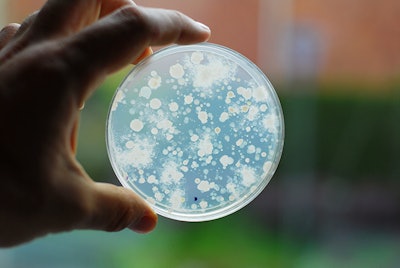
Researchers from Michigan State University are developing a rapid nanoparticle-based biosensor test to improve Salmonella and Campylobacter detection in poultry processing.
“There is an unmet need for rapid, low-cost, onsite and accurate detection of foodborne agents in large samples,” Evangelyn Alocilja, a professor in the Michigan State University Department of Biosystems and Agricultural Engineering, said.
Traditional bacterial culturing, the most common approach for pathogen detection used today, is expensive, time-intensive and requires extensive training and a laboratory-style environment.
Why worry about Salmonella, Campylobacter?
Campylobacter and Salmonella are responsible for two of the most frequently reported foodborne illnesses in the world. In addition, antibiotic resistance remains a serious concern for both of the pathogens.
“In 2018, the economic burden due to 15 foodborne pathogens was estimated at $17.6 billion in the U.S., according to the U.S. Department of Agriculture’s (USDA) Economic Research Service. Salmonella and Campylobacter caused the most reported bacterial foodborne illnesses,” she added
The project is conducted in partnership with Tuskegee University and funded by a $769,000 grant from the USDA National Institute of Food and Agriculture (NIFA).
SMART biosensors to detect foodborne pathogens
The goal of the new project is to create a rapid test for Salmonella and Campylobacter that is easy to use in all poultry processing environments.
“This research will develop a Site-enriched-Multi-Array-Reporting Biosensing Technology (or SMART biosensor in short) for rapid detection of Salmonella spp. and Campylobacter spp. in large samples,” explained Alocilja.
“The SMART biosensor includes onsite isolation and concentration of pathogens within five minutes using glycan-coated magnetic nanoparticles. DNA from the isolated bacteria will be extracted and detected using gold nanoparticles conjugated with single-stranded oligonucleotide probes. Detection is through color change: red when target DNA is present; blue when target DNA is absent.”
Preliminary results revealed the technology can detect the genomic DNA of foodborne pathogens in less than an hour.
“Although the biosensor may not be able to replace culture and may not be as sensitive as RT-PCR, it will allow high-frequency testing and support faster decision-making by producers, resulting in the improvement of animal health and welfare, increase in productivity and overall business profitability, and the implementation of pathogen reduction programs that will prevent these pathogens from entering the food supply chain and thus protect public health,” she said.
















